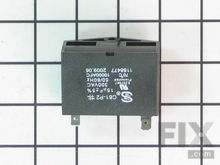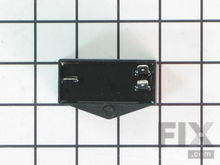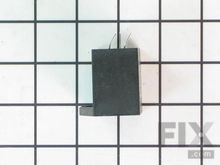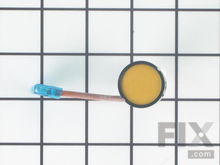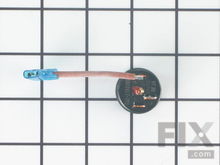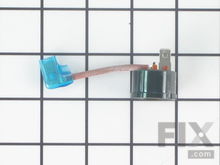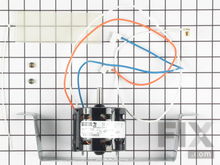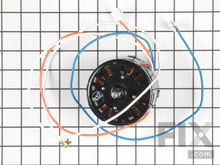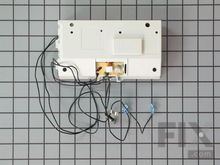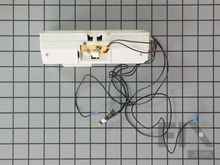How To Repair Your Dehumidifier That's Not Collecting Water
- Rated as REALLY EASY
- 60 repair stories
- 4 step by step videos
Capacitor
If your dehumidifier is no longer pulling water from the air and you have verified that the ambient room temperature is above 65 degrees Fahrenheit, then the unit’s compressor may not be running. The compressor is the pump that circulates the refrigerant through the evaporator to extract moisture from the air. There is a capacitor in the compressor circuit to help the compressor motor to start and if the capacitor has failed then the compressor won’t run. If the compressor doesn’t run or if the overload device continues to trip, then you may have a defective capacitor. An accurate diagnosis can be determined by a qualified person using special test equipment.
Overload
If your dehumidifier is no longer pulling water from the air and you have verified that the ambient room temperature is above 65 degrees Fahrenheit, then the unit’s compressor may not be running. The compressor is the pump that circulates the refrigerant through the evaporator to extract moisture from the air. There is a device in the compressor circuit called an overload and it is used to protect the compressor motor from damage. If the overload has failed then the compressor won’t start. If you have verified that the compressor doesn’t run, then you can test the overload for continuity with a multi-meter. A common cause for the overload to fail is from operating the dehumidifier on long or undersized extension cords.
Fan Motor
If your dehumidifier is not making water and you have verified that the ambient temperature is above 65 degrees Fahrenheit, then you may have a faulty fan motor. For proper operation, a dehumidifier needs to have an adequate amount of air blowing across the evaporator coils to prevent frost or ice buildup. If you feel little or no air coming through the grille area and the filter is clean, then remove the cover and check the fan area. Inspect the coils to make sure that they are not restricted with lint or dirt and clean them if necessary. Make sure that the fan motor rotates freely and that the fan blade or blower wheel is firmly attached to the motor shaft. Using caution, operate the unit in a fan only mode and observe the fan motor. If it hums but does not rotate or only rotates slowly then it is defective and will need to be replaced. If the motor does not rotate and does not appear to make any sound, it may still be defective, but will require further testing by someone who is comfortable with using a multi-meter and working with live electrical circuits.
Electronic Control Board or PCB Assembly
If your dehumidifier is no longer pulling water from the air and you have verified that the ambient room temperature is above 65 degrees Fahrenheit, then the unit’s compressor or fan motor may not be operating. The compressor is the pump that circulates the refrigerant through the evaporator, and the fan motor blows air across the evaporator coils to extract the moisture. On some modern dehumidifiers an electronic control board, often called the PCB, is used to control the compressor and fan motor. The control board has sensors connected to it that monitor the relative humidity and when the level is higher than the control setting, the control board will activate relays to turn on the compressor and fan motor. If you have an electronic control model and the compressor or the fan is not operating, then the electronic control may be at fault. A voltage test, using a multi-meter at the output relays, would be required to help in the diagnosis as well as confirmation that the sensors are operating normally.
More Repair Parts
Still not sure which part is broken? We can offer you custom troubleshooting help if you search with your model number.





